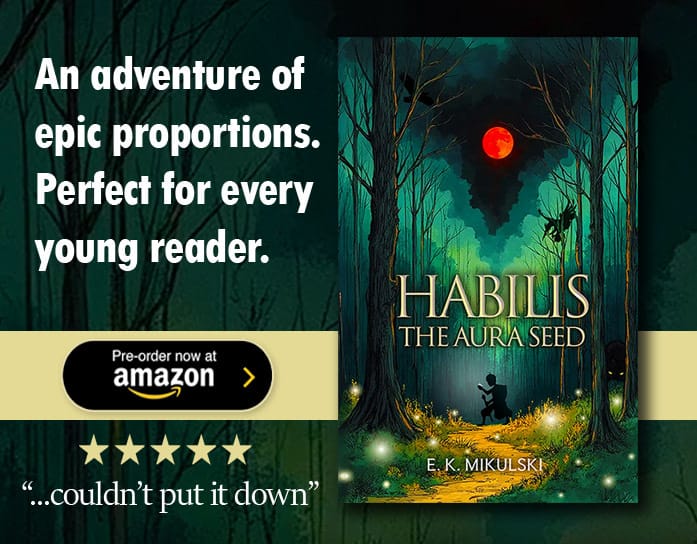
Elementary episode 3.06 "Terra Pericolosa" (which translates as "Dangerous Territory," for those who have not kept up on their Latin) offers a typically circuitous plot. That spatial metaphor is germane to the episode, as what maps can reveal--and specifically what route a topographical detail follows--is a key plot point. The episode title hints as the importance of maps in its play on "terra incognita" ("unknown territory," the words one would put on a map where the known and mapped territory ends and the unexplored territory begins). Unknown territory need not be dangerous, of course, but it's a common assumption that the unknown can be frightening/dangerous, so the equation of the unknown and the dangerous here functions well thematically (as well as literally, for the two murder victims). The connection is given further thematic resonance in the B plot in the episode, which deals with Kitty (Ophelia Lovibond) beginning the frightening and potentially dangerous process of moving into new territory herself, as she begins to move towards reclaiming a personal life, specifically in the form of a potential new boyfriend.
 The Kitty plot follows a typical trajectory for Elementary. We begin with Holmes's behaviour manifesting as a sort of extreme, as he is constantly pestering her with trivial errands (shades of him requiring her to sign a non-disclosure ageeement last episode). Why is Holmes suddenly being so paternalistic and demanding? Watson discovers Kitty's recent social engagements and recognizes that Holmes is strategically preventing her from pursuing that path. She calls him on it (and as this suggests, Watson and Kitty have gone from single-stick-wielding antagonists to--on some level anyway--colleagues, with Watson now standing up for and defending her replacement). Holmes vehemently resists Watson's interference. But then, of course, by the end of the episode, he repents of his extreme behaviour, apologizes to Kitty (citing Watson as the figure who set him straight), and learns that she knew what he was doing and read his action as loving concern which she appreciated. There's no actual group hug, but the sequence events conforms pretty well to the convention pattern of serial TV emotional development--tension to reconciliation, with the reset/repeat button all ready for next week. (Not saying that that's a bad thing--and indeed, I found several of the emotional high points, notably Holmes's defence of his actions and Kitty's confession that she saw through him, well-performed and well-staged--but it is pretty much a formula).
The Kitty plot follows a typical trajectory for Elementary. We begin with Holmes's behaviour manifesting as a sort of extreme, as he is constantly pestering her with trivial errands (shades of him requiring her to sign a non-disclosure ageeement last episode). Why is Holmes suddenly being so paternalistic and demanding? Watson discovers Kitty's recent social engagements and recognizes that Holmes is strategically preventing her from pursuing that path. She calls him on it (and as this suggests, Watson and Kitty have gone from single-stick-wielding antagonists to--on some level anyway--colleagues, with Watson now standing up for and defending her replacement). Holmes vehemently resists Watson's interference. But then, of course, by the end of the episode, he repents of his extreme behaviour, apologizes to Kitty (citing Watson as the figure who set him straight), and learns that she knew what he was doing and read his action as loving concern which she appreciated. There's no actual group hug, but the sequence events conforms pretty well to the convention pattern of serial TV emotional development--tension to reconciliation, with the reset/repeat button all ready for next week. (Not saying that that's a bad thing--and indeed, I found several of the emotional high points, notably Holmes's defence of his actions and Kitty's confession that she saw through him, well-performed and well-staged--but it is pretty much a formula). The murder plot offers some interesting twists. The initial crime is the theft of an old map, but not, as one might expect, because as an antique map it is valuable. Holmes's theory instead is that the map was stolen for the information it contained. Buried treasure perhaps? Isn't that what all ancient, coveted maps offer to show? Given that the existence of the map was generally unknown until the library that held it put a high-resolution scan of it online, though, the question must be asked: what information could the original hold that could not be gleaned from a high-resolution scan? Why do you need the original? The scan should include all the information visible on the original, right? That question is indeed asked, and answered in the affirmative. Unfortunately--especially because, as a Luddite, I was quite happy to see a plot that seemed to depend on the inherent value of original documents rather than on them simply as electronically duplicable data sets--this question never really gets satisfactorily resolved in the episode. Or, if it did, I missed the explanation. The plot was twisty, but I don't think it was that twisty; I think we just ended up with a plot hole--a bit of terra incognita in the map.
The murder plot offers some interesting twists. The initial crime is the theft of an old map, but not, as one might expect, because as an antique map it is valuable. Holmes's theory instead is that the map was stolen for the information it contained. Buried treasure perhaps? Isn't that what all ancient, coveted maps offer to show? Given that the existence of the map was generally unknown until the library that held it put a high-resolution scan of it online, though, the question must be asked: what information could the original hold that could not be gleaned from a high-resolution scan? Why do you need the original? The scan should include all the information visible on the original, right? That question is indeed asked, and answered in the affirmative. Unfortunately--especially because, as a Luddite, I was quite happy to see a plot that seemed to depend on the inherent value of original documents rather than on them simply as electronically duplicable data sets--this question never really gets satisfactorily resolved in the episode. Or, if it did, I missed the explanation. The plot was twisty, but I don't think it was that twisty; I think we just ended up with a plot hole--a bit of terra incognita in the map. Here's the story. Old map, showing territory, including the course of a river, is in a library; the library scans it and puts it online. Original map is stolen. Stolen map is recovered (two murders later, but the episode barely cared about either of these victims, so I'm going to ignore them too). Except, the stolen map is a carefully-created forgery, using paper two centuries old and ink dating from the 1940s. So, plot twist: the map in the library was actually a forgery, not the original, and a forgery produced decades ago--though why the owner would have produced such a forgery, then loaned that forgery to the library, given that the family did own the original, is a bit of a poser. What purpose would have been served by loaning the forgery? and if they loaned the forgery, what happened to the original? This latter question is of some moment, as this specific map was referenced in a treaty delimiting the land assigned to a Powhatan tribe; the path of the river shown on the map marks the border of the reserve, and the treaty specifices that the border is the river as recorded on that map, not simply that river. The river's course has been changed subsequent to the map being drawn, moving a semi-circular section of the river east and therefore shifting a chunk of land to the reserve--if the river as it is, rather than the river as it was, marks the border. Why does this matter? This chunk of land is the proposed site for a new reserve casino, a potential multi-billion-dollar boon, and it has to be build on reserve land (and, conveniently, there is literally nowhere else on the reserve that works for this purpose--not that we get any expliation of how or why that is). So, no buried treasure, but still a treasure map of sorts--but only if the river course assigns the land to the reserve!
Here's the story. Old map, showing territory, including the course of a river, is in a library; the library scans it and puts it online. Original map is stolen. Stolen map is recovered (two murders later, but the episode barely cared about either of these victims, so I'm going to ignore them too). Except, the stolen map is a carefully-created forgery, using paper two centuries old and ink dating from the 1940s. So, plot twist: the map in the library was actually a forgery, not the original, and a forgery produced decades ago--though why the owner would have produced such a forgery, then loaned that forgery to the library, given that the family did own the original, is a bit of a poser. What purpose would have been served by loaning the forgery? and if they loaned the forgery, what happened to the original? This latter question is of some moment, as this specific map was referenced in a treaty delimiting the land assigned to a Powhatan tribe; the path of the river shown on the map marks the border of the reserve, and the treaty specifices that the border is the river as recorded on that map, not simply that river. The river's course has been changed subsequent to the map being drawn, moving a semi-circular section of the river east and therefore shifting a chunk of land to the reserve--if the river as it is, rather than the river as it was, marks the border. Why does this matter? This chunk of land is the proposed site for a new reserve casino, a potential multi-billion-dollar boon, and it has to be build on reserve land (and, conveniently, there is literally nowhere else on the reserve that works for this purpose--not that we get any expliation of how or why that is). So, no buried treasure, but still a treasure map of sorts--but only if the river course assigns the land to the reserve! The forgery shows the river's course to be the current course, thereby making the land in question part of the reserve. The original didn't, or so we are told. Here's where we start to get in trouble. First, without the original at hand, how do we know whether the forgery conforms to it? (This problem is solved by the existence of photoraphs in which the original can be seen, and this photo of the original can be compared with the forgery.) (Holmes's keen observational skills are important here, and his efforts to select the correct magnifying glass to examine the evidence offer a bit of an Easter egg for those familiar with the cliche image of Holmes in deerstalker cap, carrying a magnifying glass.) Second, if the forgery was made decades ago, why would it modify the river's course as shown on the original? The twist to the twist is that the forgery wasn't really made decades ago; it's a fake fake, created recently but designed to look like it was created in the 1940s, to obscure the question. Land just on the other side of the river is still owned by the Brea family, who donated the map; if the casino is built, they stand to cash in themselves, with hotels and other businesses. If it is not, they don't. Ironically, they need part of their land to be seen as the reserve's land in order to use the rest of their land to make a mint. They, therefore, have forged the map (and, incidentally, been behind the murders) in order to erase evidence of the river's original course, and to create the illusion that the forgery--made decades ago--would not have changed what the original showed; why would it, after all? No motive then. But here's where we get into the real trouble. Turns out, it was the orignal map in the library for all those decades, and the forgery was created to be swapped out for it. But if it was the original in the library for all those years (explicitly established in the episode), why was the scan posted by the library not of that original but of the forgery? Looks like this episode wasn't mapped out quite as well as it should have been.
The forgery shows the river's course to be the current course, thereby making the land in question part of the reserve. The original didn't, or so we are told. Here's where we start to get in trouble. First, without the original at hand, how do we know whether the forgery conforms to it? (This problem is solved by the existence of photoraphs in which the original can be seen, and this photo of the original can be compared with the forgery.) (Holmes's keen observational skills are important here, and his efforts to select the correct magnifying glass to examine the evidence offer a bit of an Easter egg for those familiar with the cliche image of Holmes in deerstalker cap, carrying a magnifying glass.) Second, if the forgery was made decades ago, why would it modify the river's course as shown on the original? The twist to the twist is that the forgery wasn't really made decades ago; it's a fake fake, created recently but designed to look like it was created in the 1940s, to obscure the question. Land just on the other side of the river is still owned by the Brea family, who donated the map; if the casino is built, they stand to cash in themselves, with hotels and other businesses. If it is not, they don't. Ironically, they need part of their land to be seen as the reserve's land in order to use the rest of their land to make a mint. They, therefore, have forged the map (and, incidentally, been behind the murders) in order to erase evidence of the river's original course, and to create the illusion that the forgery--made decades ago--would not have changed what the original showed; why would it, after all? No motive then. But here's where we get into the real trouble. Turns out, it was the orignal map in the library for all those decades, and the forgery was created to be swapped out for it. But if it was the original in the library for all those years (explicitly established in the episode), why was the scan posted by the library not of that original but of the forgery? Looks like this episode wasn't mapped out quite as well as it should have been.Or maybe I've misread the map. (My wife will tell you I am very good at misreading maps.) What do you think? Have I missed a signifciant clue/landmark? Can you put me on the right path? Let me know in the comments below!













